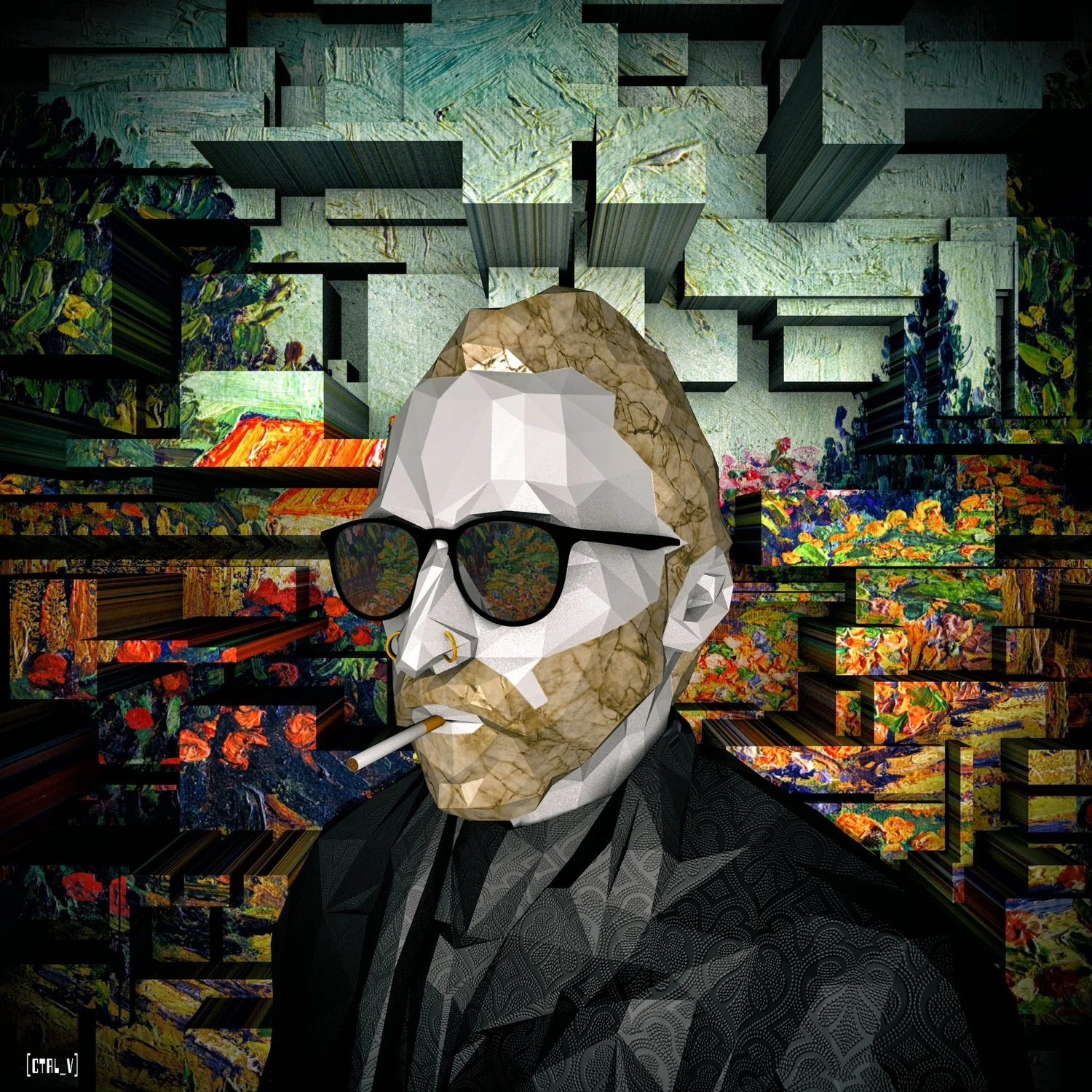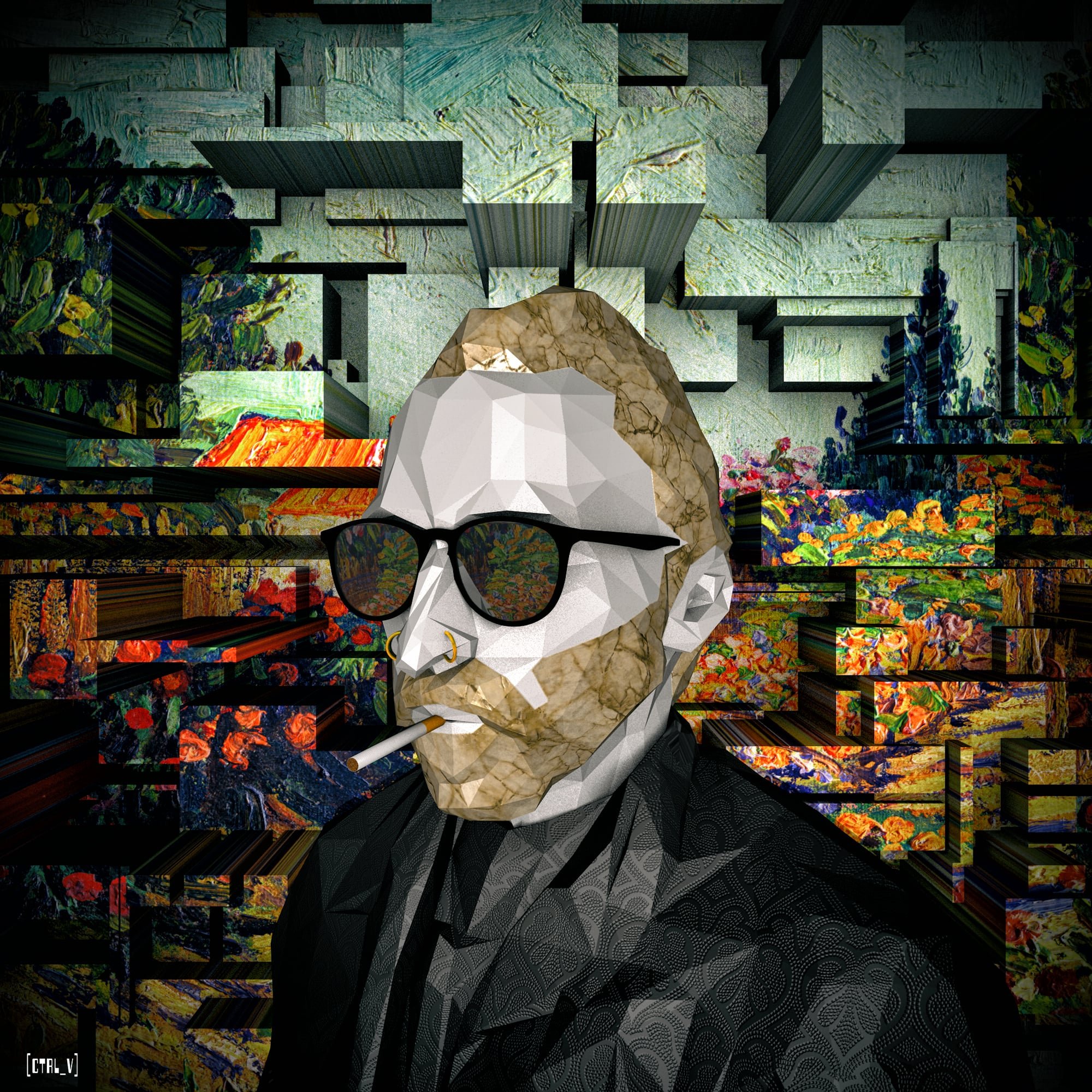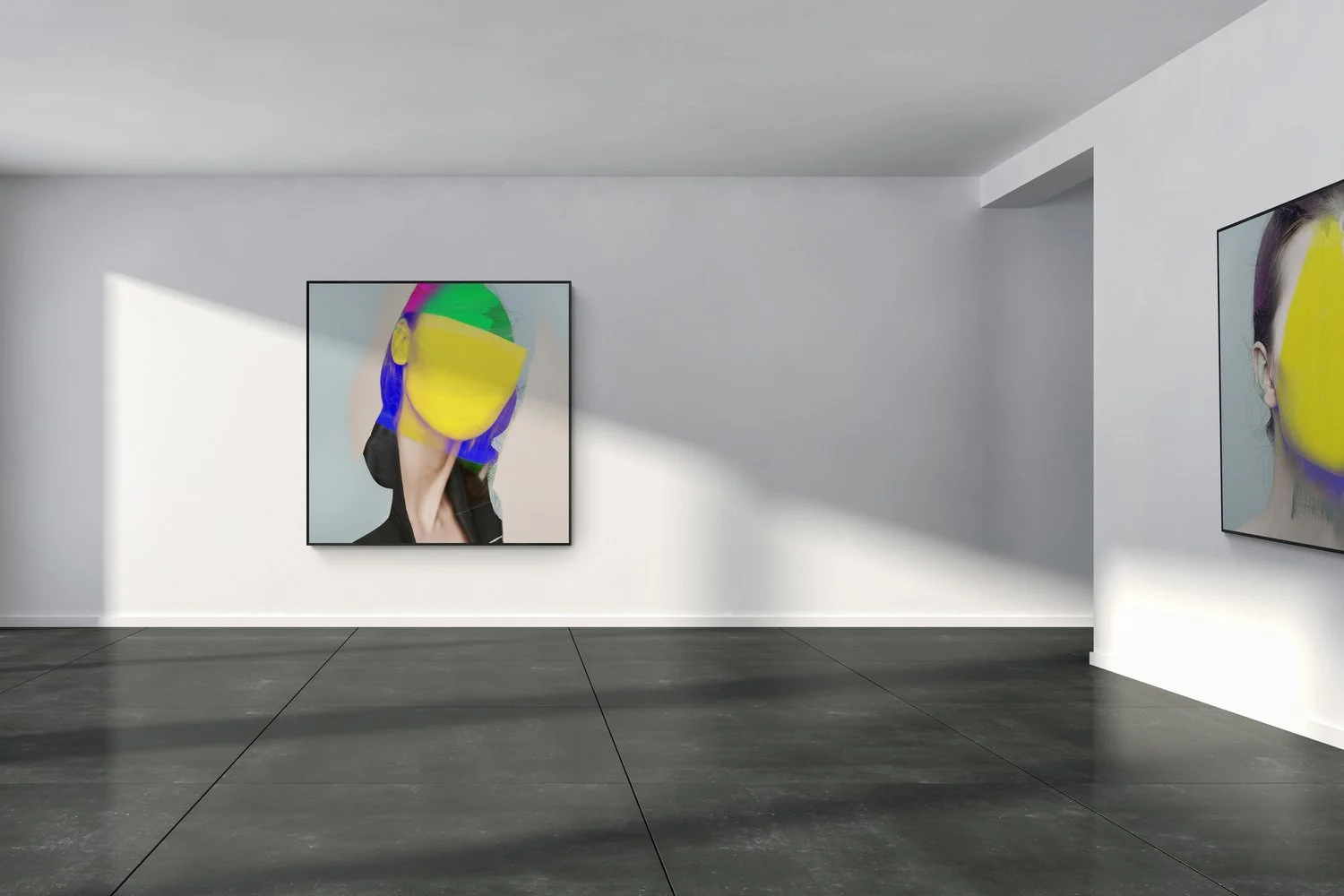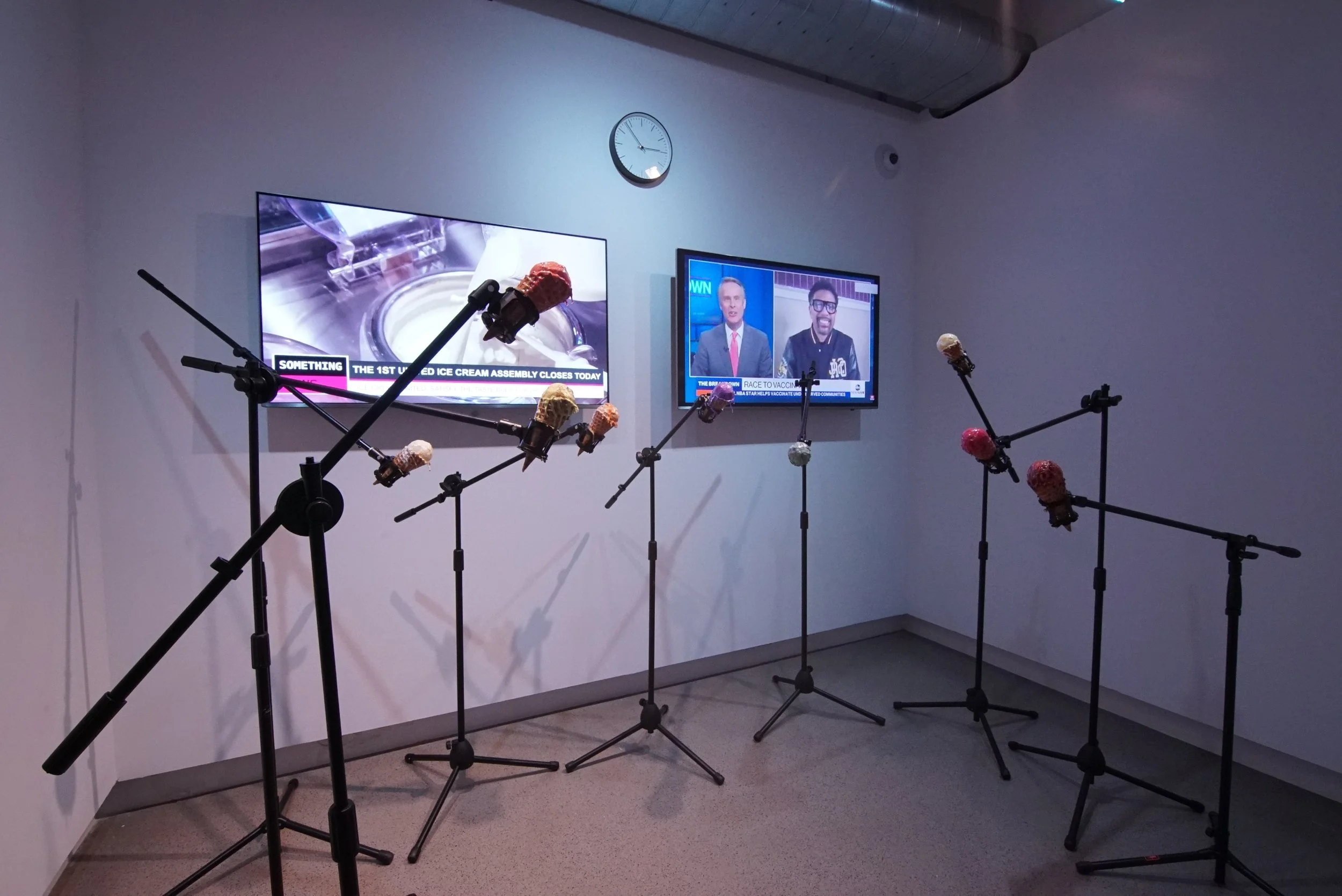10 Questions with Diego Esquivel
Diego Esquivel aka [ctrl_v] is a New Media artist born in Costa Rica.
His work has been continuously developed due to his interest in bringing the digital into the physical world, so it's been characterized by using non-traditional media, such as vjing, digital compositions, projection mapping, and, more recently, augmented and virtual reality.
Paintings, sculptures, and fine arts always caught his attention; however, he never got into a formal art education or even an interest in developing an endeavor through these traditional forms of expression. Finally, though, being exposed to the digital world since his early days of youth and later due to his access to technology in the digital production industry allowed him to develop the satisfaction for creating and discovering new ways of portraying his ideas.
He has been able to present his work in Italy (LPM Rome and 1st place at GlowFestival 2016, Ostuni), Spain (Matadero, Madrid), Netherlands (LPM, Eindhoven), England (AA School of Architecture, London), United States (Museum of the City of New York), Mexico (Centro Nacional de las Artes, CDMX), France (Porte de Paris in Lille), Japan (Odawara Castle), Iceland (Harpa Concert Hall), and of course, Costa Rica (Festival Nacional de las Artes).
His latest project is a series of NFT Avatars for Saatchi Art, inspired by Van Gogh's portraits.
Diego Esquivel Portrait
ARTIST STATEMENT
Although his projects' techniques and processes have had a predominant role in the result, the final artworks are not limited to the form but rather adapted to the content and its inner meaning.
These contents do not respond to a general theme but arise according to each project's development, context, and particular interest, either through public space intervention, complementing heritage architecture, forming part of a multidisciplinary experience, or simply establishing an interactive dialogue that goes beyond the contemplative.
He considers that his work allows him to participate in this new renascence where humanity can merge art and technology, the traditional and the digital media, the physical and the virtual worlds.
Get your limited edition copy now
INTERVIEW
Let's talk about yourself first. Why are you an artist, and how did you become one?
I'm an artist because I've always had this inner creation force, a desire to create and express myself. I find enormous joy in the whole process of bringing to life an idea: learning, experimenting, discovering, developing, find new meanings. I probably started becoming an artist when I did drawings as a child; however, I'm sure that my Atari 2600 and my first PC had a lot to do to start the digital fire inside my brain.
You don't have a traditional art education, and you work predominantly with digital technologies. When did you start experimenting with art, and when did you decide to become an artist?
I think it all started when I got my first laptop, and a friend introduced me to the VJing world. Being able to experiment and create moving digital compositions in real-time opened my mind to new levels of creation. When I realized that these digital contents could be projected and fixed to real surfaces, I felt that I wanted to become an artist. A new Renaissance was coming, not only because of the new techniques and technologies available for artists but because of the possibility of "breaking the square", breaking the screen limitation for merging the digital content with the real world.
How would you define yourself as an artist?
I consider myself a curious person. When I find something that interests me, I jump into it, looking to learn and experiment with it, especially regarding techniques and technology for creation. Once that info and knowledge is inside my head, those dots usually get connected with ideas already there or that eventually will come from many sources of inspiration.
In your work, you blend different technologies, such as vjing, digital compositions, projection mapping, augmented and virtual reality. How did you get interested in these fields, and what potential do they have in your opinion?
Since I got my first laptop, everything evolved organically as I learned new techniques, and new tools and technologies kept coming and started being more accessible to the public. When I got into the VJing scene, I found a robust community of artists sharing their knowledge and supporting each other, and that's something I've been finding within the other fields as well. The potential is enormous even within each area due to the wide range of expression and application possibilities; however, in my opinion, at the end of the day, all sums up to the fact that boundaries are disappearing between the digital and physical worlds. We're no longer creating artworks to only be contemplated or consumed but to be explored, interacted with, and lived.
What messages are you trying to communicate with your art? And what do you think differentiates your approach from others?
Even though my art has been related to innovative ways of expression, I've always looked forward to working with something that goes beyond the "eye candy" or the "innovation wow", something with a deeper meaning, and that could be a concept developed through storytelling or an experience that people can give their own meaning. I think each piece that I've created has had a particular intention or "message" within its context; however, with all this Digital Renaissance phase that we're living globally, I lately feel the need to express subjects that relate to all these changes and things that we're still trying to make sense of as humanity: metahumans, ethical concerns, pandemics, climate change. For example, my work "gene.sys" refers to this new book that we're starting to write as species and the dichotomy of embracing it or rejecting it. What price are we willing to pay for the apple?
Legado (Origen), AR Installation, FNA, 2020 © Diego Esquivel
Casa Tomada, Multidisciplinary Performance, 2014 © Diego Esquivel
You recently approached NFTs as well and started producing them yourself. Tell us more about this project and what you would like to achieve.
Well, I would say it was kind of serendipity because my art has always been ephemeral, and since a year ago, I started looking to create physical artworks as well, traditional art, if you may say so. So, I created "gene.sys", which consist of three printed and framed digital artworks that at the same time can be visualized in 3D through augmented reality. I put them on sale through Saatchi Art, which it was a never explored land for me, and while I was learning about the art market and how artists sell their physical artworks, I found artists in forums talking about how NFTs were opening new opportunities in terms of no longer deal with shipping costs and being able to sell their art directly to buyers. So, I thought, why not put "gene.sys" on any of these crypto platforms as an NFT as well? The funny thing is that Saatchi Art invited me later on for taking part in their first NFT project called "The Other Avatars", a collection of original artworks by 150+ emerging artists across the globe, selected by Saatchi curators and inspired by the self-portraits of Vincent van Gogh and the NFT landscape in 2021. Personally, I loved their approach of replacing the computer algorithm with human artistic talent for generating unique pieces as NTF artworks.
With the rising of the NFTs market, these are often associated with speculation. What are your thoughts on this? In your opinion, what are the advantages of working with NFTs?
I believe that speculation has always been present in art in general. I still have problems understanding how a banana duct-taped in a wall is worth $120 K. In my opinion, the platform of NTFS is basically a reflection of human behavior and many other things that we're still trying to figure out in society. As an artist, I find it as a nice first iteration of something that might help solve the difficult financial situation of many artists around the globe. Hopefully, it will evolve into more efficient energy consumption methods and connect with the right audiences.
Vincent #452, NFT, The Other Avatars, 2022 © Diego Esquivel
Another key theme of your work is the relationship between the real world and technology. Do you think that the advent of the Metaverse will have a significant impact on how we perceive our world? And how can art be influenced and live in this new world?
Metaverse will definitely have an impact. The pandemical situation accelerated this process, and I think that we're even already living this impact; however, it's something that we will live with gradually and that we'll be able to look back and tell the difference in maybe five years top. I think art is already influenced, and we can see it with the NFTs movement. Still, the greater impact that we'll see would be related to how we'll be immersed in art experiences and how we'll be able to live them in completely different ways than we have before. For example, the discovery and use of perspective in art played a fundamental role during the Renaissance due to the effect that spectators were looking at a scene through a "hole in the wall" rather than at a flat, two-dimensional plane. I think that Metaverse is giving us now a chance to get through that "hole in the wall".
What do you think of digital exhibitions and presentations? Do you think art will be fully digital, or will there always be a need for in-person viewers?
I think that digital exhibitions are a wonderful solution for reaching wider audiences, overcoming distance limitations, and creating different experiences that can not be replicated in physical spaces. However, I don't think that they will replace in-person experiences. You may get an accurate and detailed glimpse of the Sistine Chapel's look through a VR experience, but it can never be compared to the astonishing experience of being physically there. Last year a holographic dance performance called SONZAI took place at one of the Victoria and Albert Museum's halls. I believe this is how digital should be embraced into physical spaces, as complementary content that can enrich the physical artworks and the experience of the audience.
And lastly, as we are just at the beginning of a new year, what are your plans for the future and what are you working on now?
I want to keep exploring all these new Metaverse platforms and how they can be linked to a single narrative or artwork in different levels of reality. I just started working on unlockable augmented reality pieces in a public space that relates to the same thematic and interacts with their physical surroundings, some sort of an alternate reality for that location that will live in the same space and time but is visible only through technology.






















